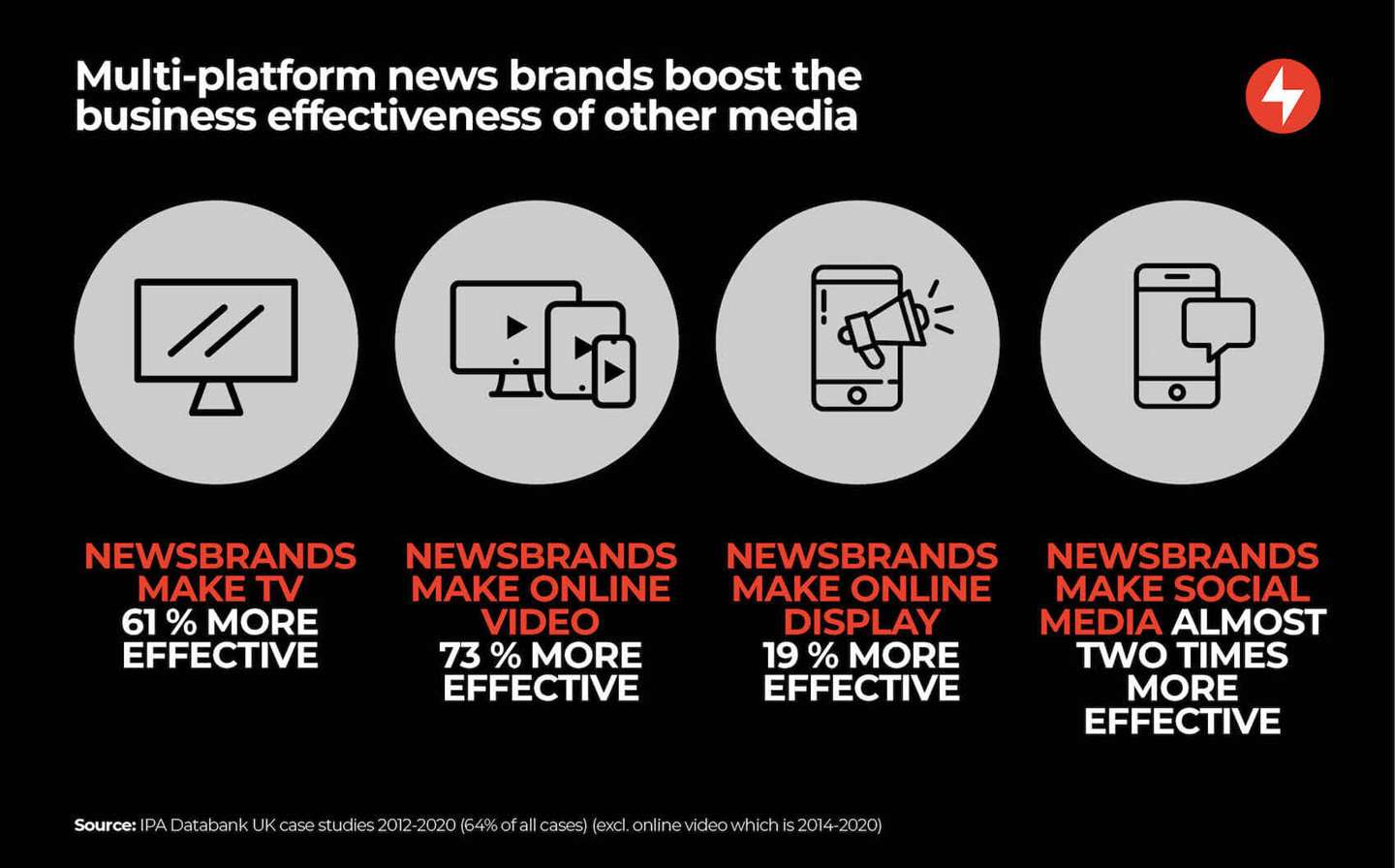There’s extensive evidence to show that when used in the media mix, print is effective in boosting the success of other channels. The data shows that the more touchpoints used in an advertising campaign, the greater the ROI. In fact, the just-published IPA Databank Study 2021 shows that multi-platform news brands bolster the business of other media. And print’s impact can be considerable. For example, news brands make TV 61 per cent more effective, while they make social media almost twice as effective.
For Denise Turner, Insight Director at Newsworks, this confirms the power of print. ‘One key point from the IPA report was the fact that there is a multiplier effect from both using print and digital news brands as part of a campaign. The trusted environment that long-established print brands provide for brands that advertise within them is translated into the same effect when advertisers and brands use the digital news brand environment. And we’ve seen from this study that both print and digital news brands boost effectiveness when used in conjunction with other channels.’
If using more than one news brand platform delivers more than the sum of two parts, why then, has there been a dearth of cross-media measurement that counts print in the mix? To plan an ad campaign effectively, you first need to gather insights into a consumer’s daily life, helping planners understand behaviour around media consumption, be it in print, on the radio, smartphone or TV. And only comprehensive, across-the-board post-campaign measurement can give advertisers optimum insight for planning future campaign spend and optimising ROI.






